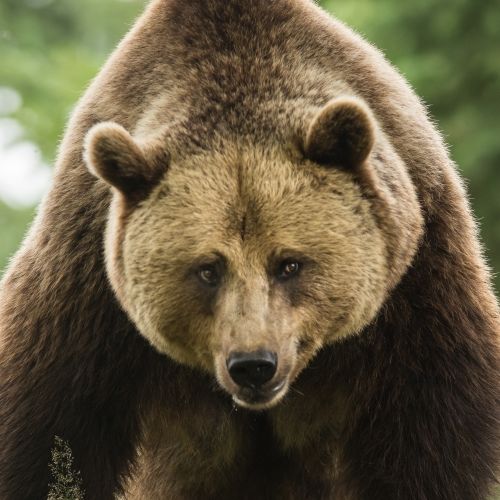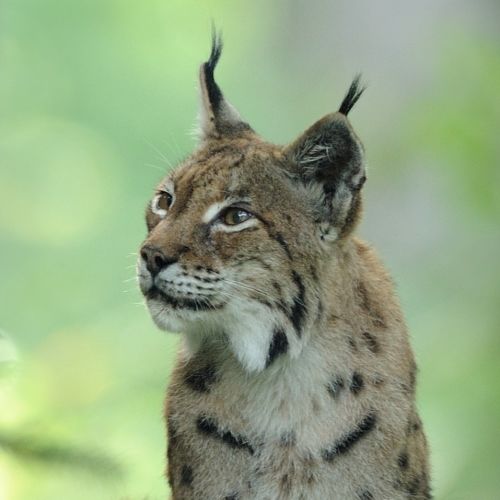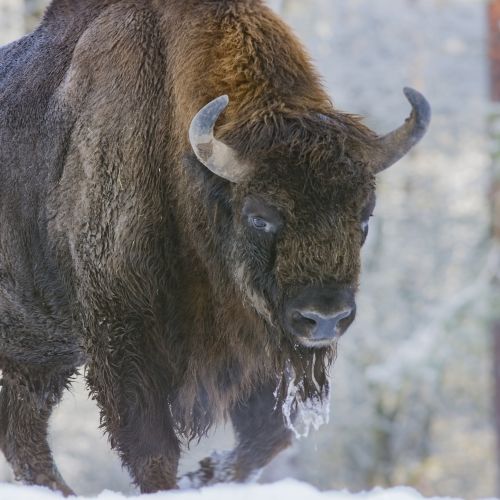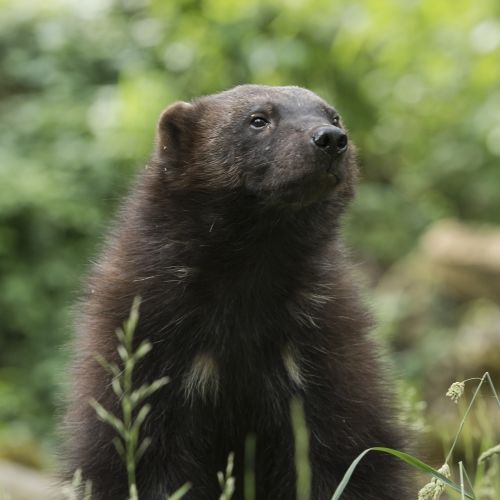The European bison
Grasslands stretch out as far as the eye can see… your eyes roam the horizon where capricious curves flirt with sharp shadows. Everything is peaceful. In the distance, a cloud of dust rises, momentarily obscuring the horizon. A galloping brown bulk quickly comes closer. The sound of its hooves pounding the ground intensifies the impression of a frenetic race. Brusquely, the animal grinds to a halt. It is puffing heavily and its gaze is unnerving. Emotion reigns, seeing a real life bison is a thrilling experience, a moment of pure happiness…
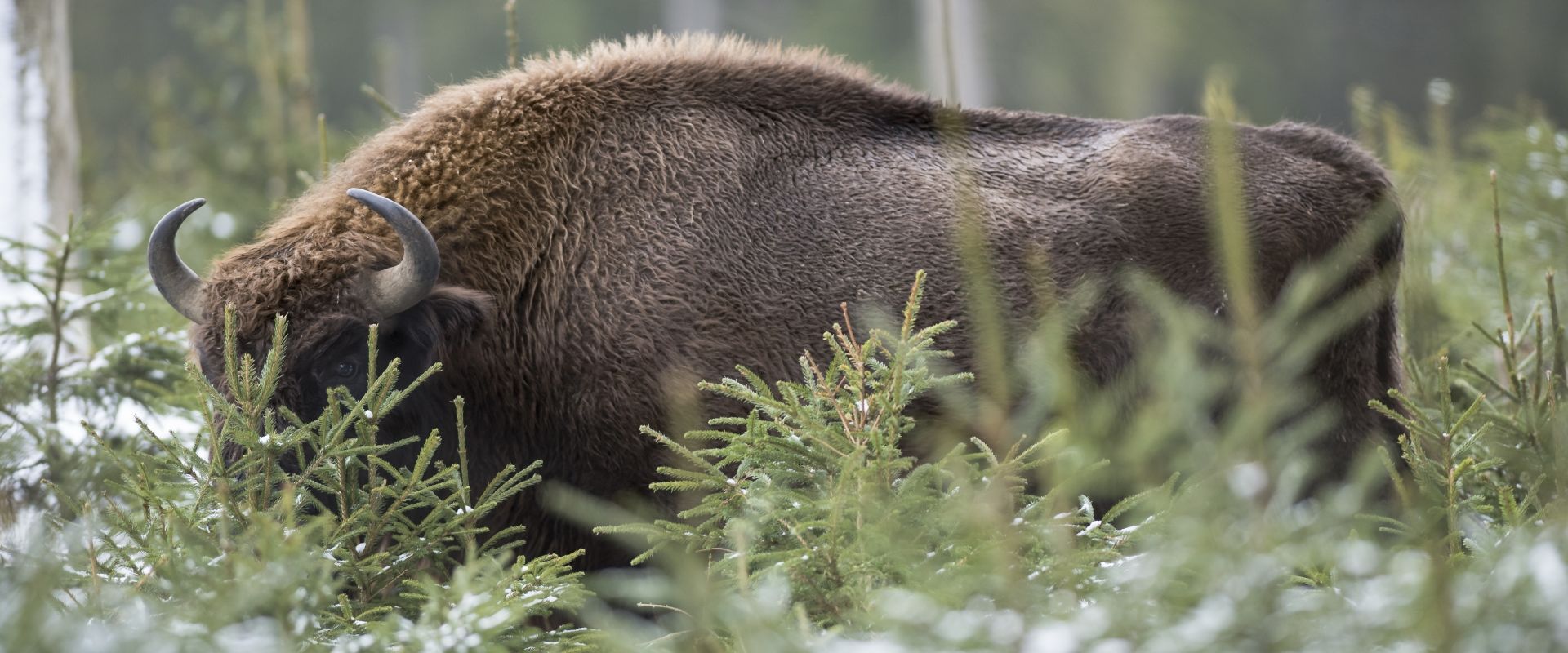
The giant of the forests
The bison has survived the ages. It has fascinated prehistoric man, who tried to capture its impressive curves over and over again with rudimentary cave drawings. Even today, the bison impresses those who cross its path. But the race faced extinction. In 1923, there were only 57 captive individuals left in the whole world! Saved in extremis from certain extinction, the species is now gradually reintroduced into its natural habitat.
The bison is the largest and heaviest of Europe’s land mammals. Male bison can weigh up to 900 kg and be up to 2 m high, which doesn’t prevent them from being really fast runners: they can run at a speed of up to 60 km/hour! Bison live in herds led by a female. During the rutting season, the males do battle and face each other in impressive combats. In order to intimidate their adversaries, bison lower their head, shaking it from left to right while snorting and pawing the ground… and if these warning signs aren’t enough, the bison will charge!
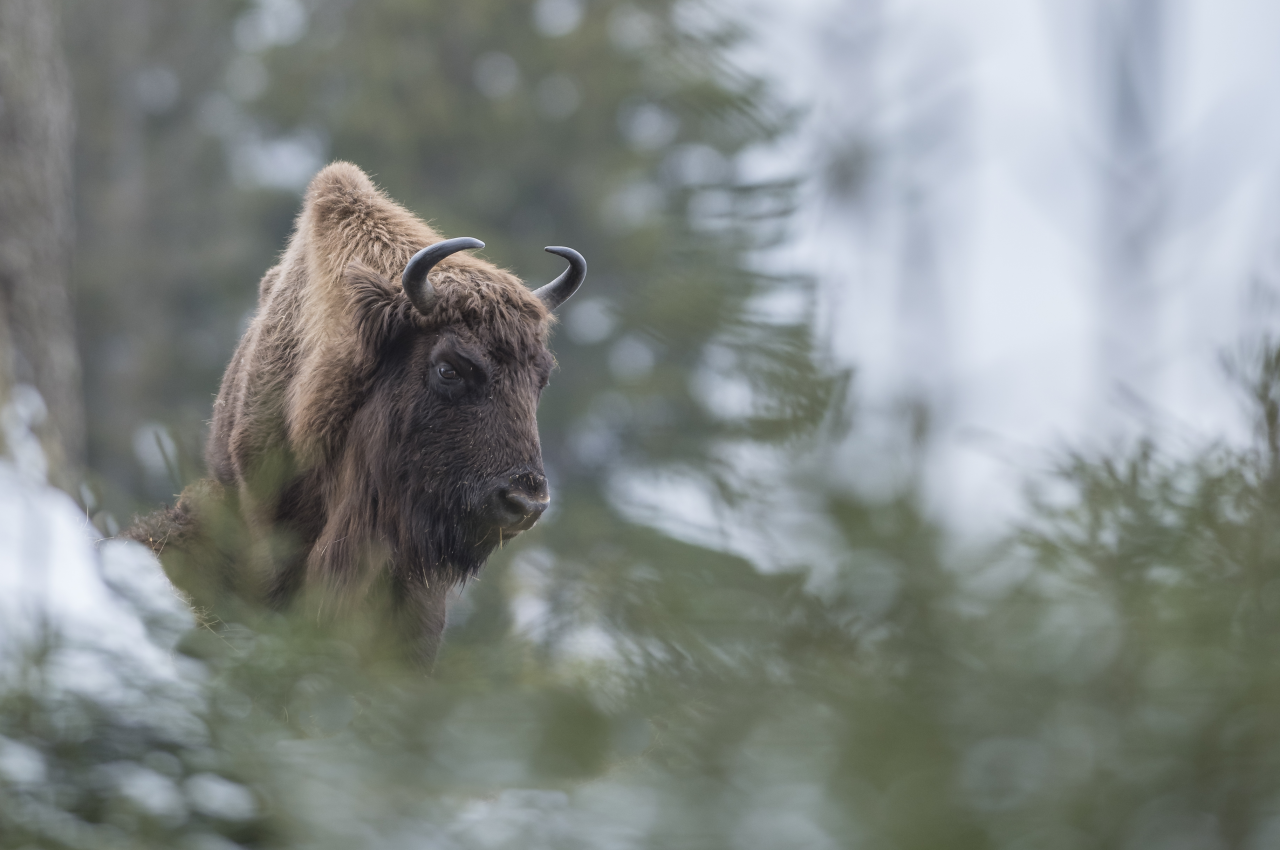
Habitat
The European bison is a forest dweller while its cousin, the American bison, prefers vast plains. This forest animal likes to eat tree bark, but trees stripped of their bark tend to die. On the plus side, this creates clearings and glades in the forest, letting the sunlight shine through, thus allowing new species of plants to thrive in what was previously an inhospitable environment!
Did you know that?
Bison can eat up to 25 kg of plants per day!
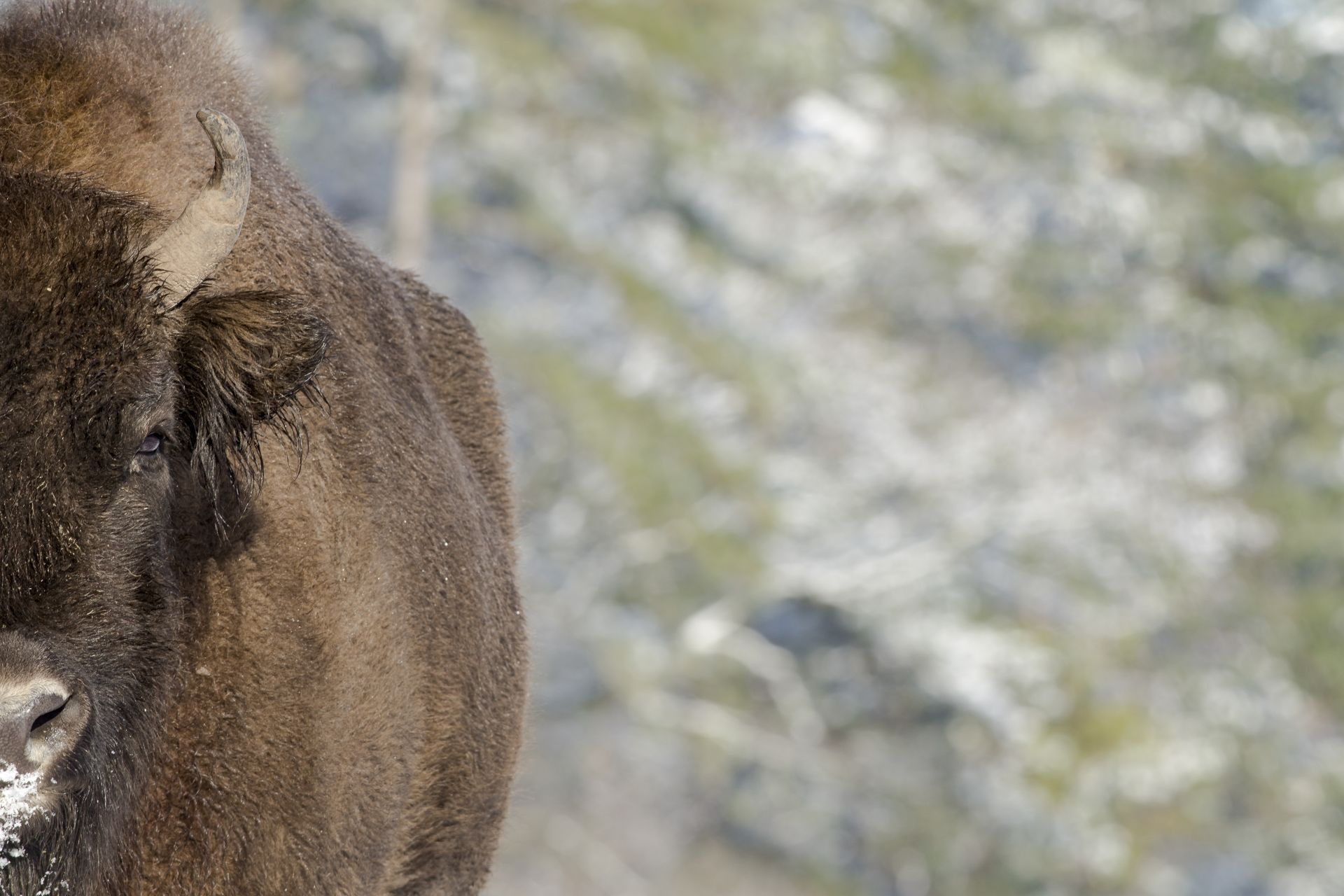
Discover the European Big 5
The bison, the wolverine, the wolf, the lynx and the brown bear
